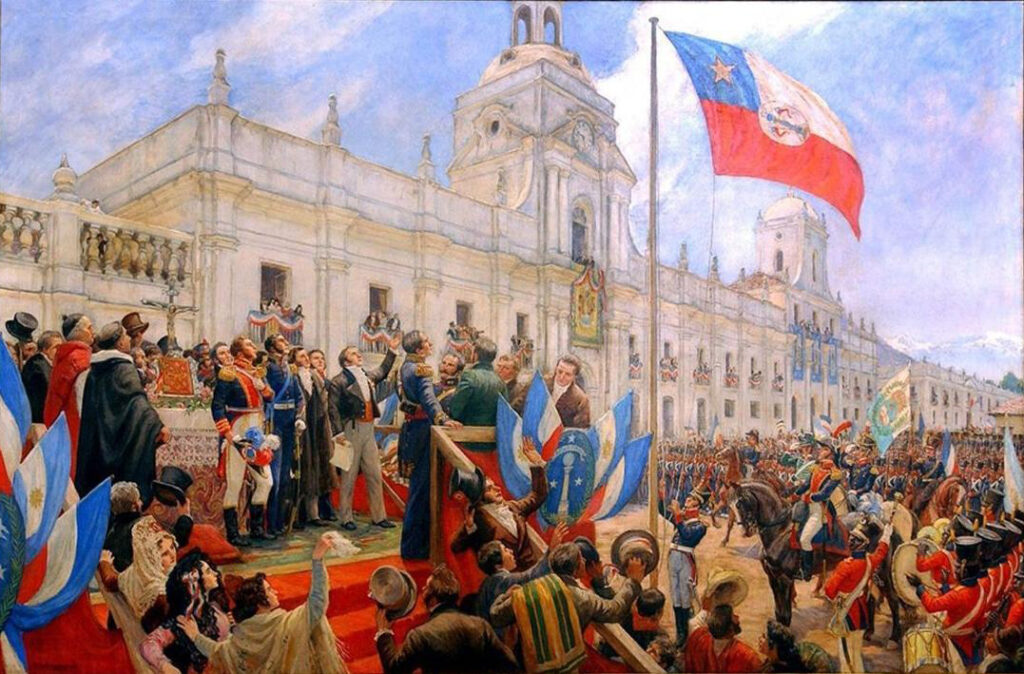The Lone Star: a symbol on Chile’s flag and in its skies


Posteado
Cielos Chile
schedule Thursday 25 de September
The origin of the white five-pointed star on the national flag has several historical interpretations. A more contemporary one could include a reminder to take care of our privileged skies, which are also part of the country’s identity.
Among the national emblems of the world, stars are a recurring symbol. Whether they have 5, 6, 12, or 24 points, they appear on the flags of 59 independent states. The Chilean flag is one of them. However, unlike others that feature constellations or multiple stars, a “lone star” stands out against the blue background in the upper left corner of the Chilean flag. White and five-pointed, this symbol is steeped in history and meanings that reflect our country’s identity.
The current Chilean flag has more than 200 years of history. Its concept and main elements were devised by War Minister José Ignacio Zenteno during the administration of Bernardo O’Higgins, whom some sources also cite as one of its creators.
Meanwhile, the design is attributed to Spanish military officer Antonio Arcos, although some historians also point to Gregorio de Andía y Varela as the author. The tricolor flag with its star was legalized by decree on October 18, 1817, but was used publicly for the first time on February 12, 1818, during the proclamation of Chile’s independence.
This design succeeded two other emblems that marked the beginnings of the republic and did not have a star: the first flag, known as the Old Fatherland flag (1812-1814), had three horizontal stripes of blue, white, and yellow. Then the Transition Flag was adopted, which replaced yellow with red, but it did not last long.

The multiple meanings of the star
The current flag retained the three colors of the transitional flag, but with a new arrangement that included the distinctive lone star. Over time, its design was refined. According to information from the Ministry of Foreign Affairs, “in 1854 the proportion of the colors was fixed and in 1912 the diameter of the star was defined.”
In the symbolism of the flag, blue represents the sky and the Pacific Ocean, white represents the snow of the Andes Mountains, and red represents the blood shed by the heroes of independence. However, the meaning of the star has multiple interpretations.
One of the most widespread versions is that the star symbolizes the three branches of government: executive, legislative, and judicial, which ensure the integrity of the nation.
Other interpretations point to a deeper, more ancestral origin. According to philosopher and academic Gastón Soublette, in his work La Estrella de Chile (The Star of Chile), Bernardo O’Higgins may have been inspired by the star of Arauco, a symbol of the Mapuche people known as Guñelve or Wüñelfe, which represents the planet Venus or the morning star and is depicted as an eight-pointed star.
In fact, Soublette and other authors argue that O’Higgins’ original design incorporated a five-pointed star with an eight-pointed asterisk embroidered inside it, merging both symbols.
This connection is also reinforced by the fact that the star was part of the iconography of the Lautaro Lodge, an organization to which O’Higgins and other Spanish American independence leaders belonged.
A star that connects us to the skies of Chile
It is now possible to propose a new interpretation of this national symbol that connects the star on the flag with the skies of Chile. Our country is world-renowned for having some of the most pristine skies on the planet, which by the end of this decade will allow the country to concentrate over 60% of the world’s astronomical observation capacity.
From this perspective, the lone star in the deep blue of the flag could also be a tribute to this unique natural heritage and a reminder that Chile has a unique window to the universe, open to global astronomy in its quest for knowledge.
However, this privilege is fragile. Today, light pollution threatens the darkness of our skies, putting both astronomical research and a fundamental part of the country’s identity at risk.
That is why, in this month of national celebrations, the call is to take care of this national heritage. Protecting our skies is protecting a part of who we are, ensuring that the star that represents us on the flag continues to symbolize the infinite stars that shine over Chile night after night.

Subscribe to our newsletter
Receive relevant information about the skies of Chile every month
